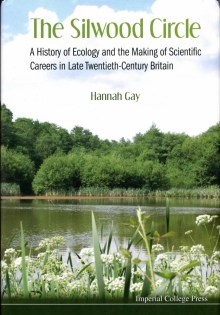New book celebrates ecological heritage of Imperial's Silwood Campus

Book preview: The Silwood Circle: A History of Ecology and the Making of Scientific Careers in Late Twentieth-Century Britain
Many staff at the College will be familiar with The History of Imperial College 1907–2007, the highly regarded book by Dr Hannah Gay, Honorary Research Associate in the Centre for the History of Science, Technology and Medicine, which has just moved to King’s College London. Now, for readers who have worked their way through that impressive volume, there is more. 
Hannah recently completed The Silwood Circle: A History of Ecology and the Making of Scientific Careers in Late Twentieth-Century Britain (Imperial College Press, 2013). It recounts the careers of a close-knit group of 10 ecologists that formed at Silwood Park Campus in the late 1960s and early 1970s, namely Richard Southwood, Robert May, Gordon Conway, Michael Hassell, Roy Anderson, Michael Crawley, John Lawton, John Beddington, John Krebs and David Rogers.
The book shows how ecology, a peripheral discipline in the first half of the twentieth century, came to be viewed as a science central to modern existence
– Hannah Gay
Members of this group, which become known as ‘the Silwood circle’, have since acted as government advisors for conservation and biodiversity, resource management, pest control, food policy, GM crops and foods, sustainable agriculture, international development, defence against biological weapons, and epidemiology and infectious disease control. May and Beddington both became chief scientific advisors to the UK government, and May was elected President of the Royal Society.
The book also shows how ecology, a peripheral discipline in the first half of the twentieth century, came to be viewed as a science central to modern existence.
Hannah, who is an Imperial alumna (Chemistry, 1961; PhD, 1964), is currently working on a history of the Department of Chemistry with Professor William Griffith.
Article text (excluding photos or graphics) © Imperial College London.
Photos and graphics subject to third party copyright used with permission or © Imperial College London.
Reporter
Andrew Czyzewski
Communications Division